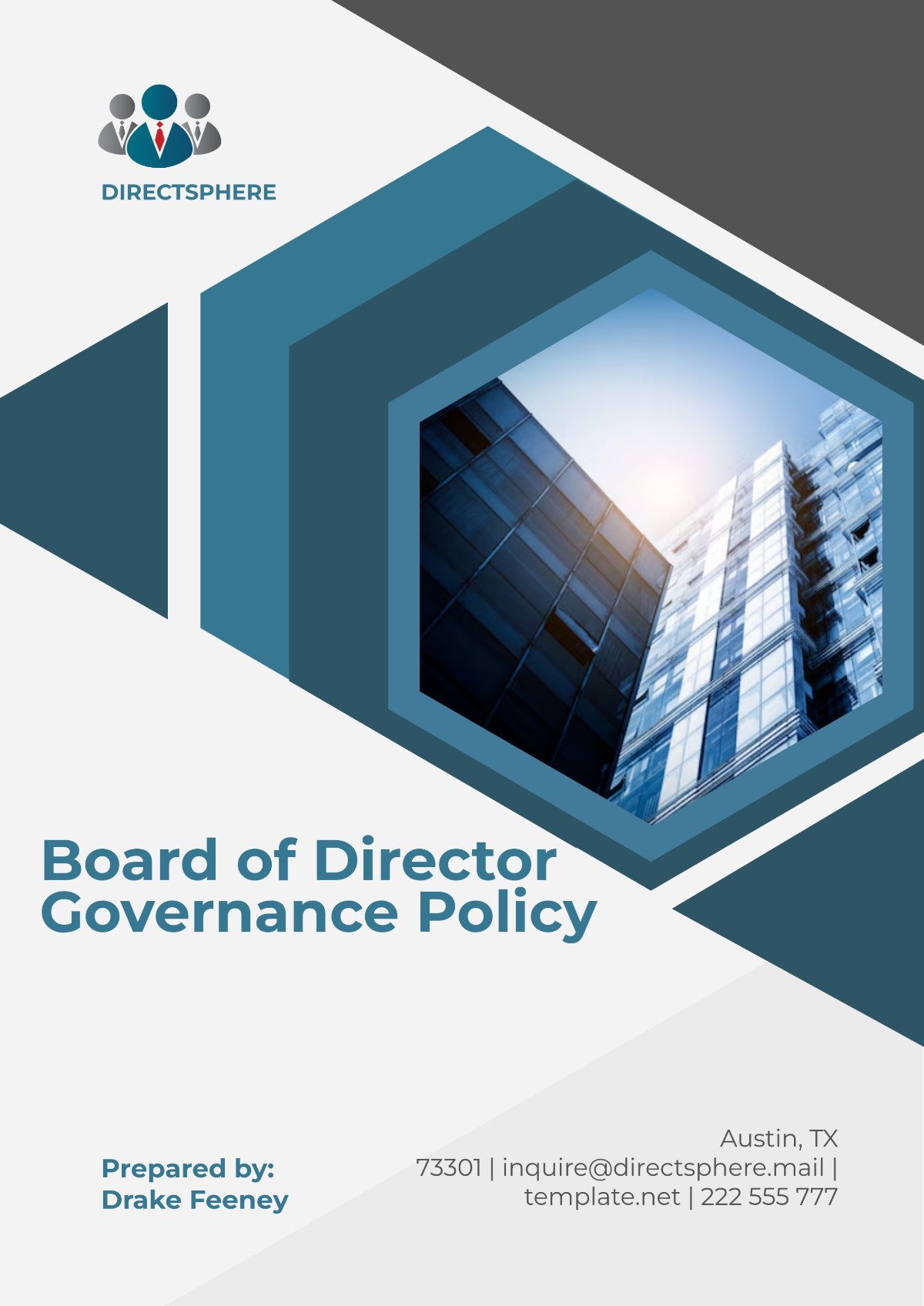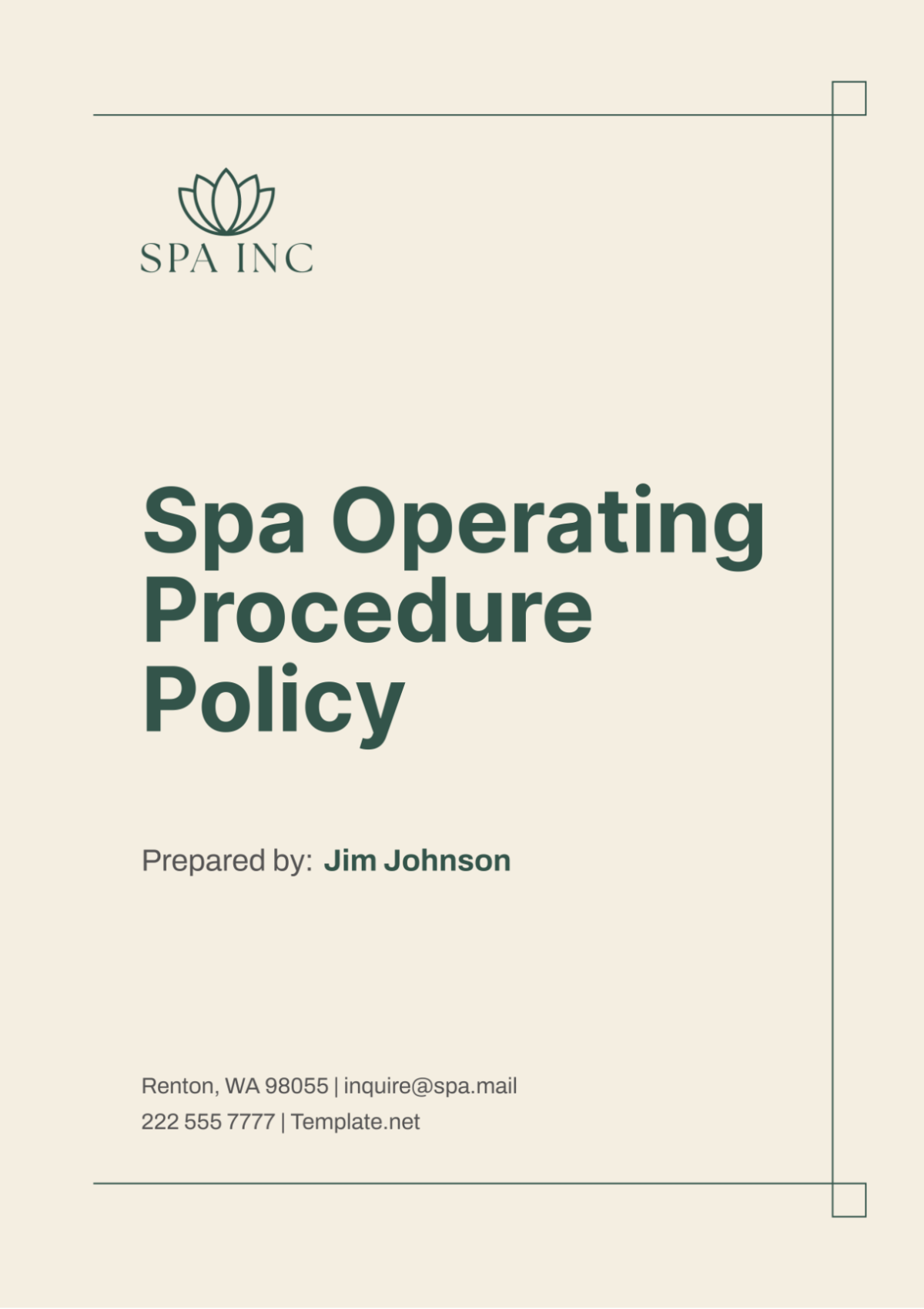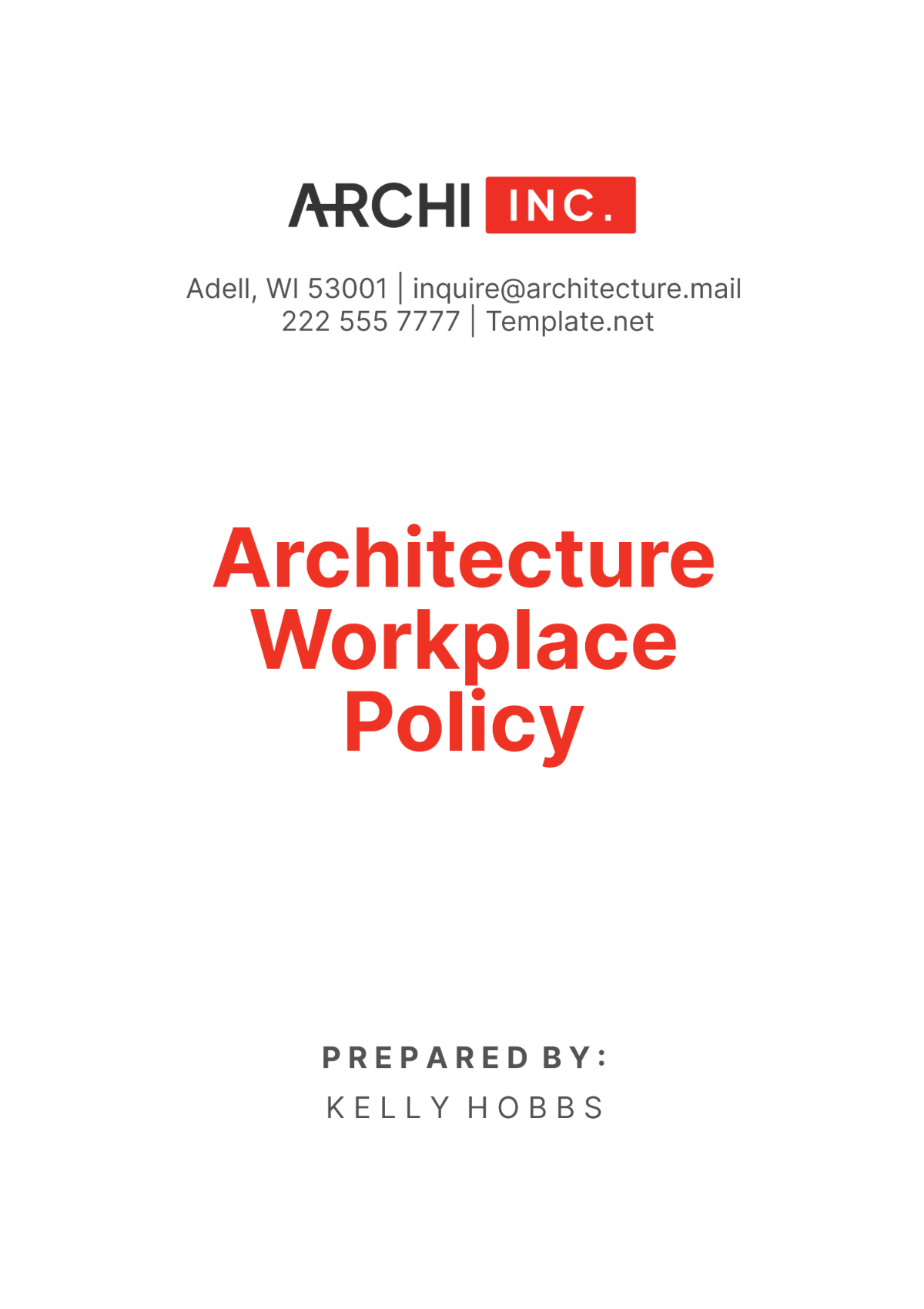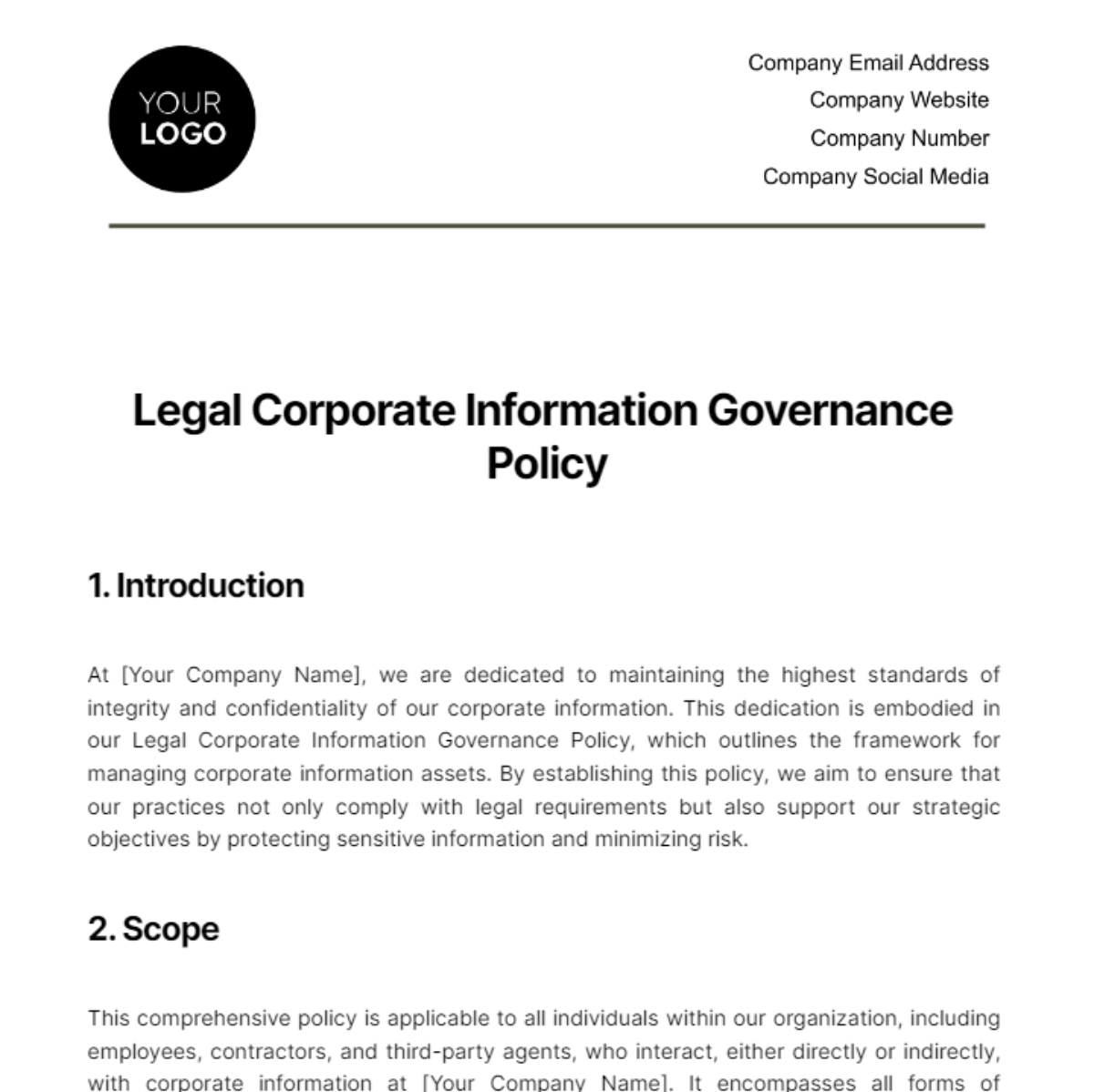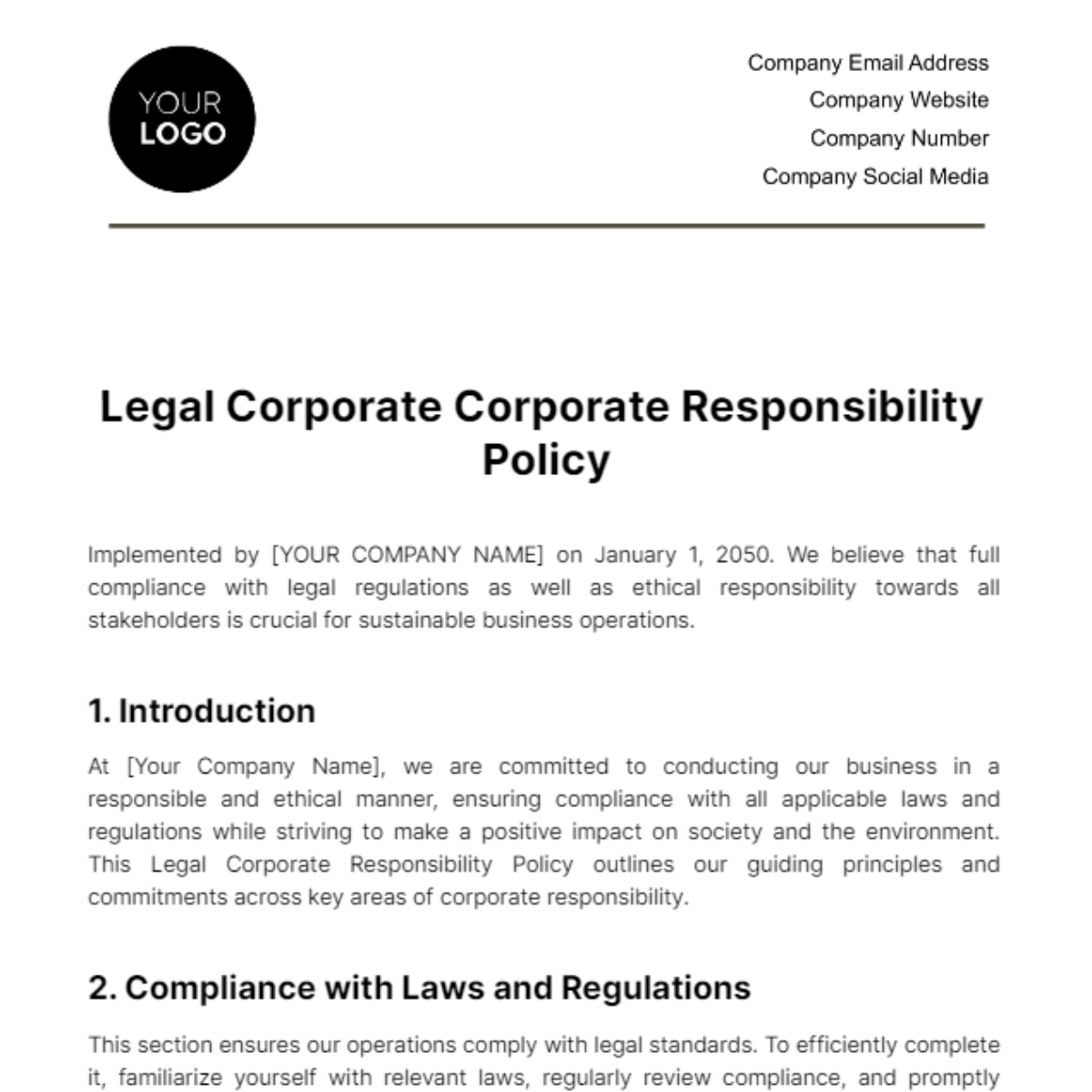Architecture Workplace Policy
I. Introduction
The purpose of this Architecture Workplace Policy is to establish guidelines that ensure a professional, safe, and respectful work environment for all employees, contractors, and visitors. This policy outlines our expectations for workplace conduct, health and safety, use of company resources, and performance management. It applies to all individuals working within or visiting our facilities.
II. Workplace Conduct
A. Professional Behavior
We expect all individuals to maintain a high standard of professional behavior while at work. This includes punctuality, adherence to project deadlines, and demonstrating integrity and accountability in all tasks. Professional behavior is essential for fostering a productive and collaborative work environment.
B. Respect and Dignity
Everyone has the right to be treated with respect and dignity in the workplace. We are committed to creating an inclusive environment where diversity is valued, and all individuals are treated equitably. This commitment extends to interactions with colleagues, clients, and visitors.
C. Harassment and Discrimination
Harassment and discrimination of any kind are not tolerated. We are dedicated to providing a workplace free from harassment, including sexual harassment, and discrimination based on race, gender, age, disability, sexual orientation, religion, or any other characteristic protected by law. Any incidents of harassment or discrimination should be reported immediately, and they will be addressed promptly and appropriately.
III. Health and Safety
A. Health and Safety Responsibilities
Ensuring health and safety in the workplace is a collective responsibility. Everyone must contribute to maintaining a safe working environment.
Employees: Follow safety guidelines and report hazards.
Management: Provide necessary training and resources.
Safety Officers: Conduct regular safety inspections and ensure compliance.
B. Safety Procedures
Adhering to safety procedures is crucial to prevent accidents and injuries. All personnel must familiarize themselves with and follow these procedures.
Use personal protective equipment (PPE) as required.
Follow proper lifting techniques to prevent injuries.
Keep work areas clean and free of hazards.
Report any unsafe conditions immediately to a supervisor.
C. Emergency Procedures
Being prepared for emergencies is essential to ensure the safety of all personnel. The following procedures should be followed in the event of an emergency.
Fire
Evacuate the building immediately using the nearest exit.
Do not use elevators during a fire evacuation.
Assemble at the designated meeting point and await further instructions.
Medical Emergency
Call emergency services immediately.
Provide first aid if trained and it is safe to do so.
Report the incident to a supervisor as soon as possible.
Natural Disasters
Seek shelter in designated safe areas.
Await instructions from emergency personnel or supervisors.
IV. Work Hours and Attendance
A. Working Hours
Our standard working hours are designed to ensure that all tasks are completed efficiently while maintaining a healthy work-life balance for employees. The typical working hours are from 9:00 AM to 5:00 PM, Monday through Friday. Flexibility may be provided based on project needs and individual circumstances, subject to prior approval from management.
B. Attendance
Regular attendance is crucial for maintaining productivity and meeting project deadlines. Employees are expected to arrive on time and be present for the full duration of their scheduled hours. Any planned absences or late arrivals should be communicated to the supervisor as early as possible. Unplanned absences due to illness or emergencies must be reported promptly.
C. Leave
We provide various types of leave to support the well-being of our employees. The following are the types of leave available and their respective policies:
Sick Leave: Employees are entitled to sick leave for personal illness or injury. A medical certificate may be required for absences longer than three consecutive days.
Vacation Leave: Paid vacation leave is provided to allow employees to rest and recharge. Vacation requests should be submitted at least two weeks in advance and are subject to approval based on project needs.
Maternity/Paternity Leave: Employees are entitled to maternity or paternity leave in accordance with local labor laws. Documentation and advance notice are required.
Bereavement Leave: Employees may take bereavement leave in the event of the death of an immediate family member. Up to three days of paid leave are provided.
Unpaid Leave: Employees may request unpaid leave for personal reasons. Approval is at the discretion of management and is based on operational requirements.
V. Use of Company Resources
A. Use of Equipment and Tools
Proper use of company equipment and tools is essential for safety and productivity. Employees are responsible for the care and maintenance of the equipment they use.
Use equipment only for its intended purpose.
Follow operating instructions and safety guidelines.
Report any damage or malfunctions immediately.
Keep equipment clean and in good working order.
Return equipment to its designated storage area after use.
B. Internet and Email Usage
Internet and email are vital tools for communication and research. However, their use should be professional and appropriate at all times.
Use company internet and email primarily for work-related purposes.
Avoid accessing inappropriate or non-work-related websites.
Do not use company email for personal communications.
Protect sensitive information by using secure communication methods.
Report any suspicious emails or cybersecurity threats immediately.
C. Confidentiality and Data Protection
Protecting confidential information and data is critical to maintaining the integrity and reputation of our organization. Employees are expected to handle all company data with the utmost care.
Ensure confidential information is only shared with authorized individuals.
Use strong passwords and encryption for sensitive data.
Follow company guidelines for data storage and backup.
Report any data breaches or loss of confidential information immediately.
VI. Performance Management
Our performance management system is designed to ensure that employees meet their goals and contribute to the success of the organization. Regular reviews help identify areas for improvement and opportunities for professional development.
Metric | Target Value |
|---|---|
Project Deadlines Met | 95% |
Quality of Work | 90% satisfaction rating |
Attendance | 98% |
Client Satisfaction | 90% satisfaction rating |
Team Collaboration | 85% positive feedback |
Performance reviews are conducted biannually, with additional reviews scheduled as needed. During these reviews, employees will receive feedback on their performance metrics, discuss progress towards their goals, and identify areas for development. Reviews are documented, and action plans are created to support continuous improvement and professional growth.
VII. Workplace Environment
A. Cleanliness and Maintenance
Maintaining a clean and well-maintained workplace is essential for the health, safety, and productivity of all employees. Everyone is responsible for keeping their work areas tidy, and any maintenance issues should be reported promptly to the maintenance team. Regular cleaning schedules are in place to ensure common areas are kept clean and hygienic.
B. Sustainability Practices
We are committed to promoting environmentally sustainable practices in our workplace. This includes reducing waste, conserving energy, and using sustainable materials whenever possible. Employees are encouraged to participate in recycling programs, minimize paper usage, and turn off lights and equipment when not in use.
C. Workspace Ergonomics
Creating an ergonomic workspace helps prevent injuries and promotes comfort and productivity. The following guidelines should be followed to ensure an ergonomic work environment:
Chair: Adjust the chair so that feet are flat on the floor and knees are at a 90-degree angle.
Desk: Ensure the desk height allows forearms to be parallel to the floor when typing.
Monitor: Position the monitor at eye level to avoid neck strain.
Keyboard and Mouse: Place the keyboard and mouse within easy reach to prevent overreaching.
Breaks: Take regular breaks to stand, stretch, and rest eyes to reduce fatigue.
VIII. Conflict Resolution
Effective conflict resolution is essential for maintaining a harmonious and productive work environment. Conflicts should be addressed promptly and respectfully, following these steps:
Acknowledge and define the issue clearly.
Discuss the conflict openly with the involved parties, focusing on the issue.
Collaborate to find mutually acceptable solutions.
If the conflict cannot be resolved, involve a supervisor or HR for mediation.
Monitor the situation to ensure the conflict has been resolved satisfactorily.
IX. Compliance and Disciplinary Actions
Adherence to workplace policies is critical for maintaining a safe and productive environment. The following table outlines common violations and corresponding disciplinary actions:
Violation | Disciplinary Action |
|---|---|
Late Arrival/ | Verbal warning, |
Harassment/ Discrimination | Immediate investigation, |
Violation of Safety Procedures | Verbal warning, retraining, possible suspension |
Misuse of Company Resources | Written warning, possible suspension or termination |
Confidentiality Breach | Immediate investigation, possible termination |
Employees have the right to appeal disciplinary actions they believe are unjust. Appeals must be submitted in writing to HR within seven days of the disciplinary action. The appeal will be reviewed by a panel, and a final decision will be communicated within 14 days.
X. Review and Update of Policy
This workplace policy will be reviewed annually to ensure its relevance and effectiveness. Updates will be made as necessary to reflect changes in regulations, organizational needs, and feedback from employees. Employees will be informed of any changes to the policy, and training sessions will be conducted to ensure understanding and compliance.






